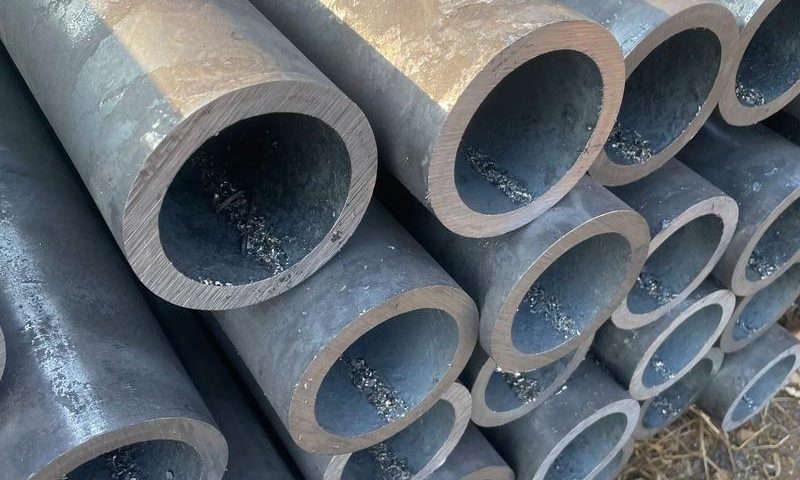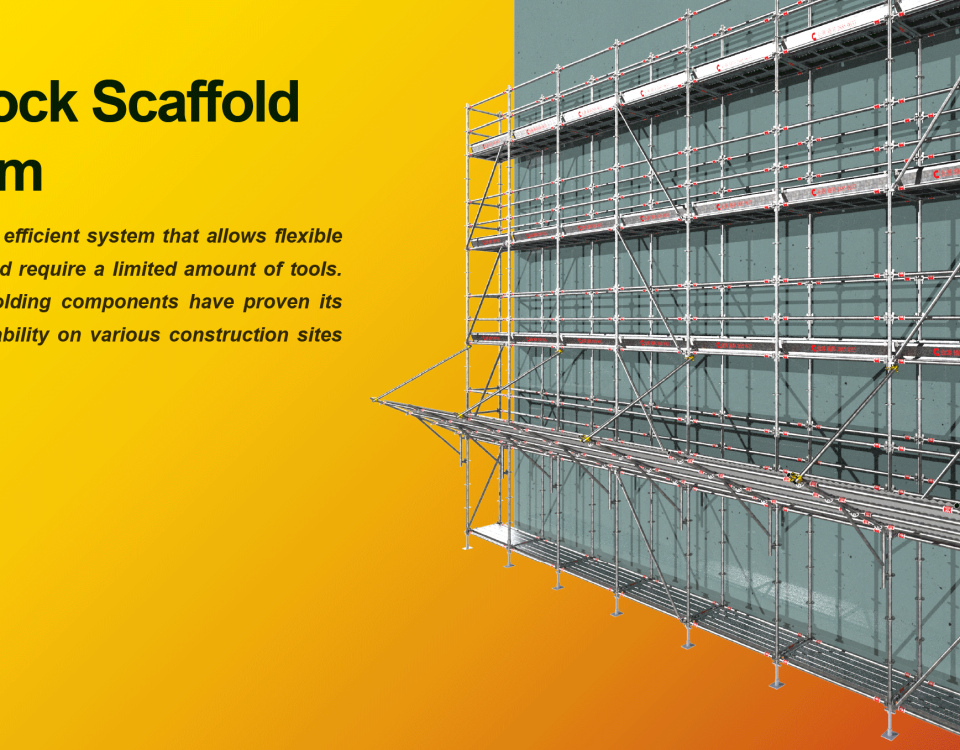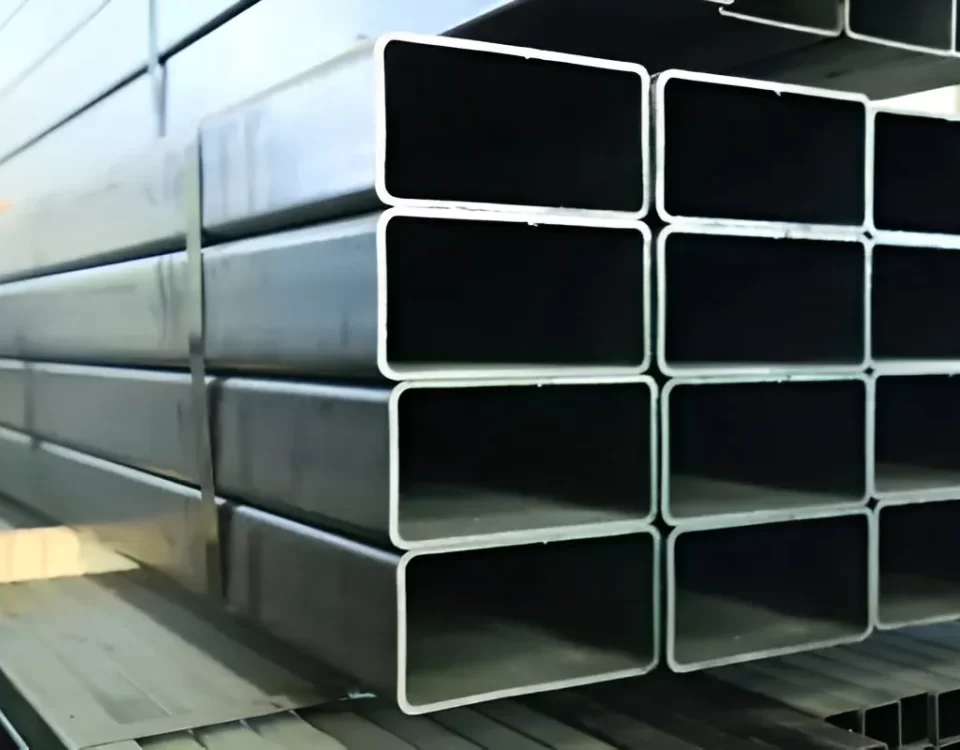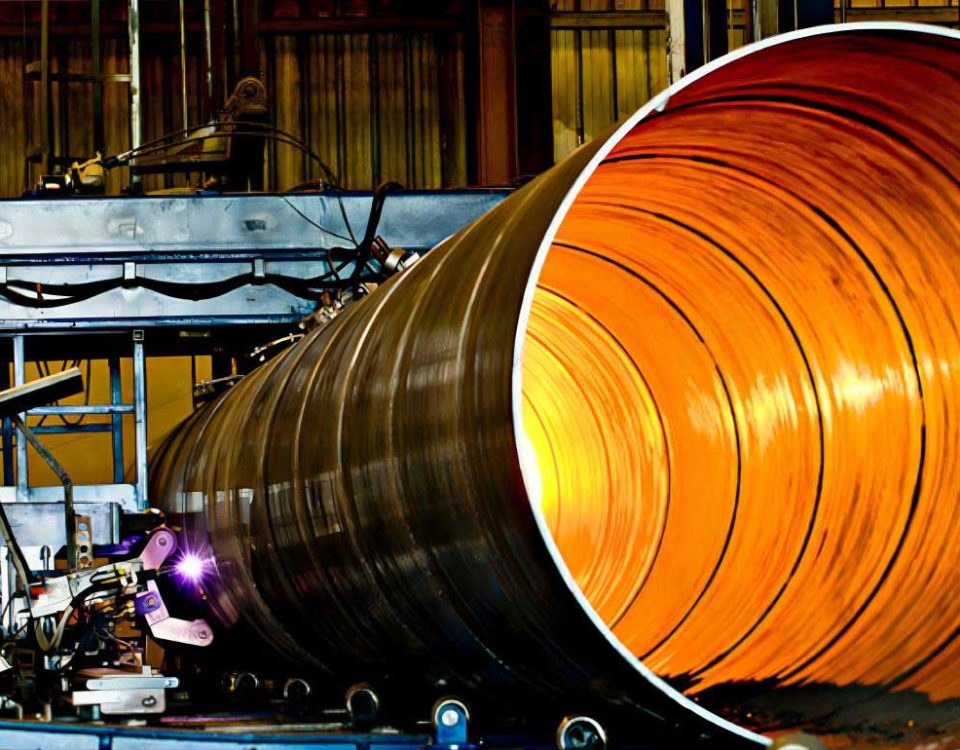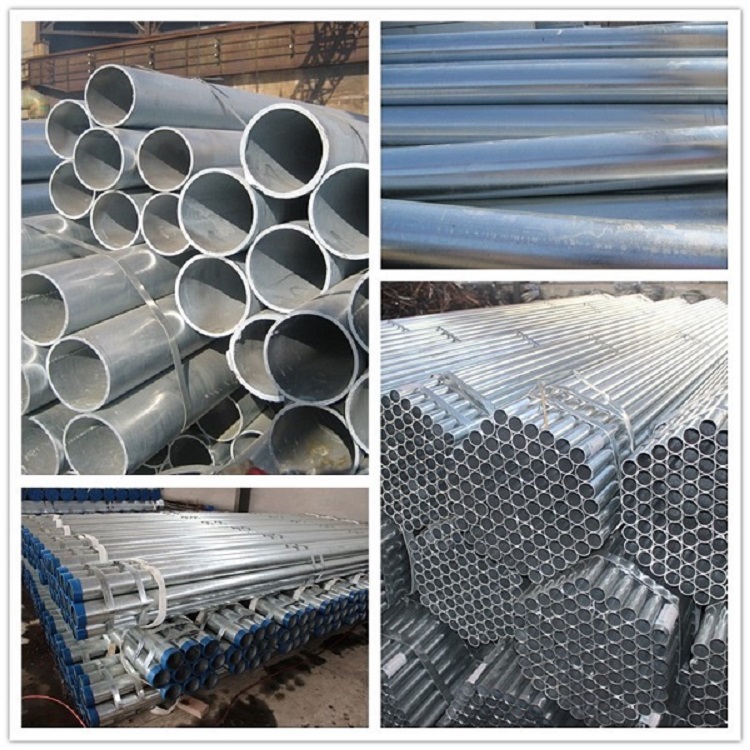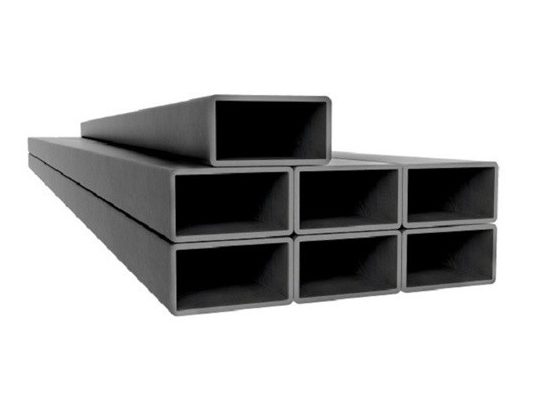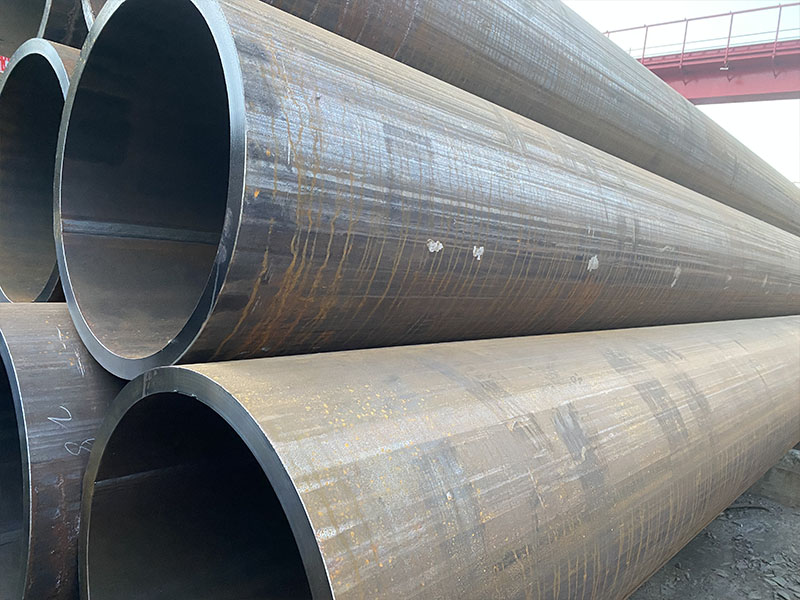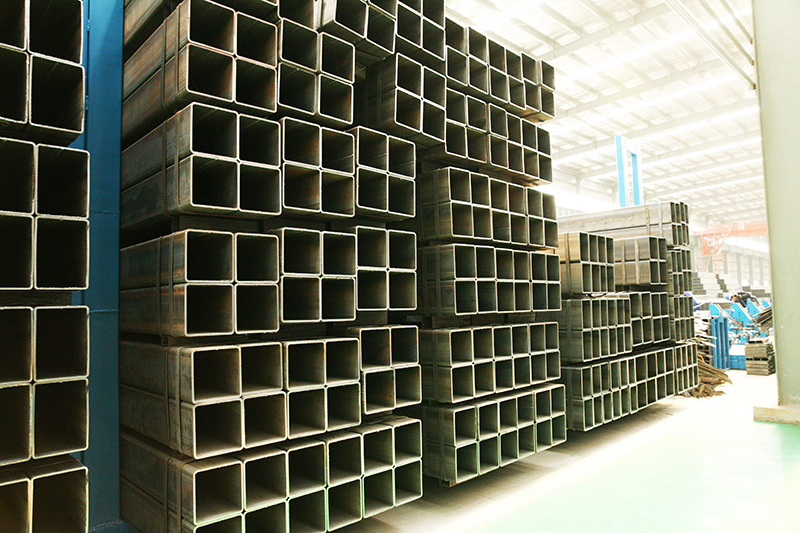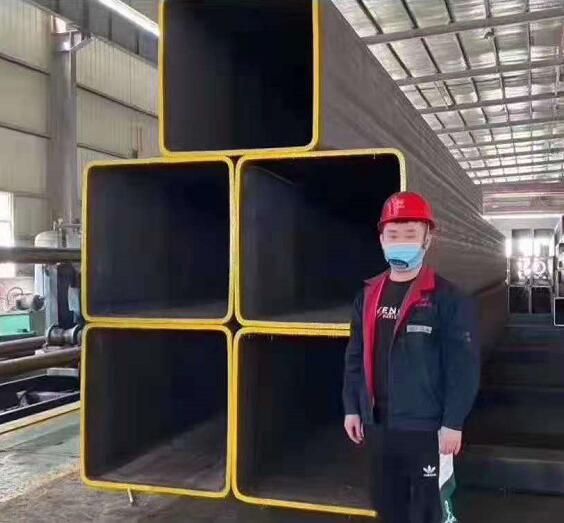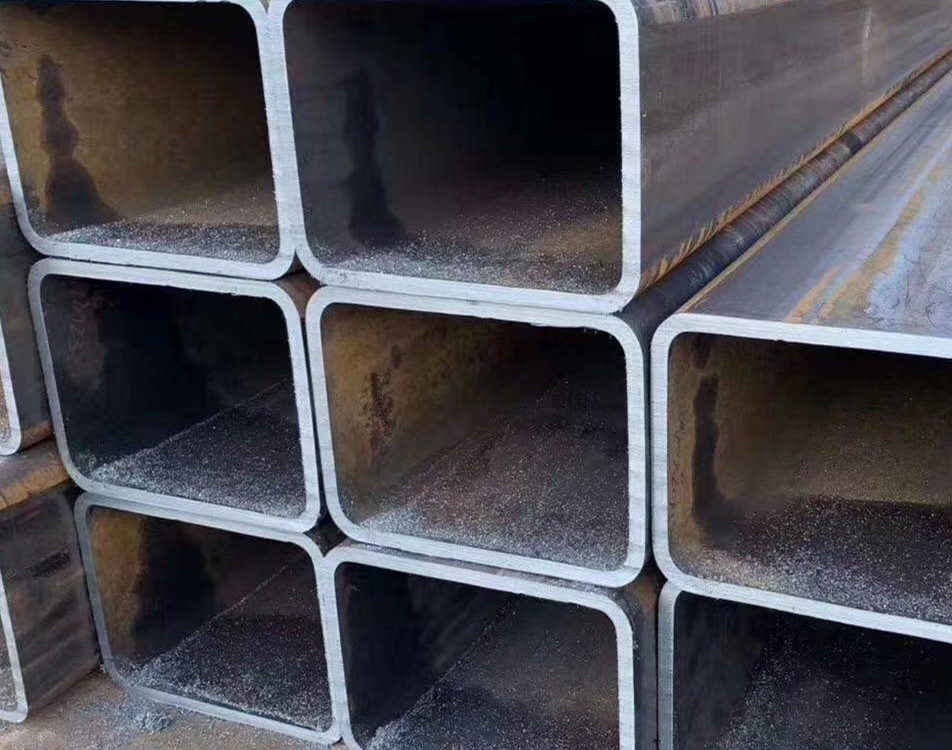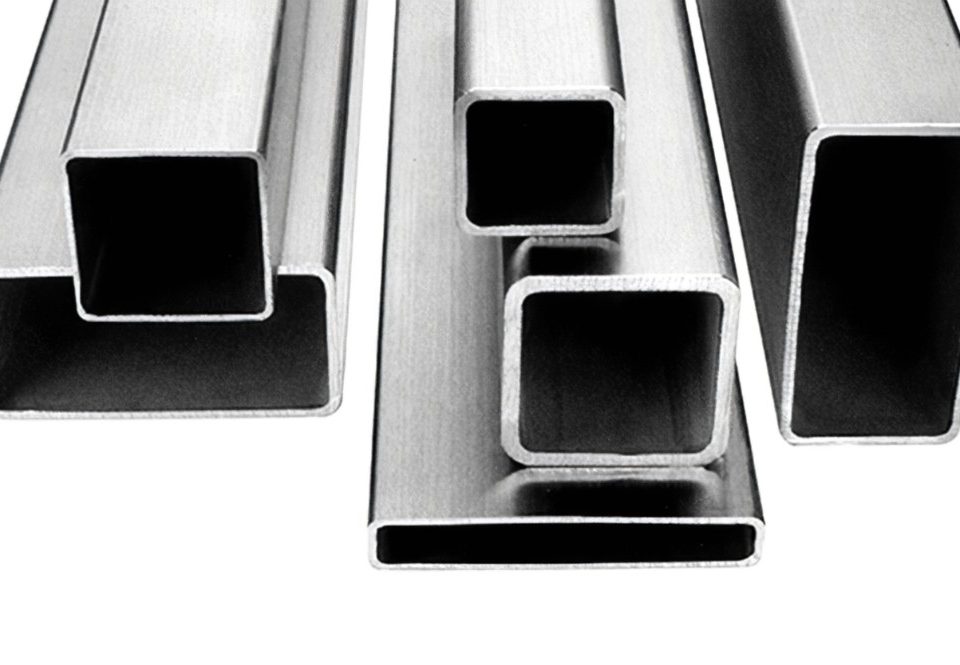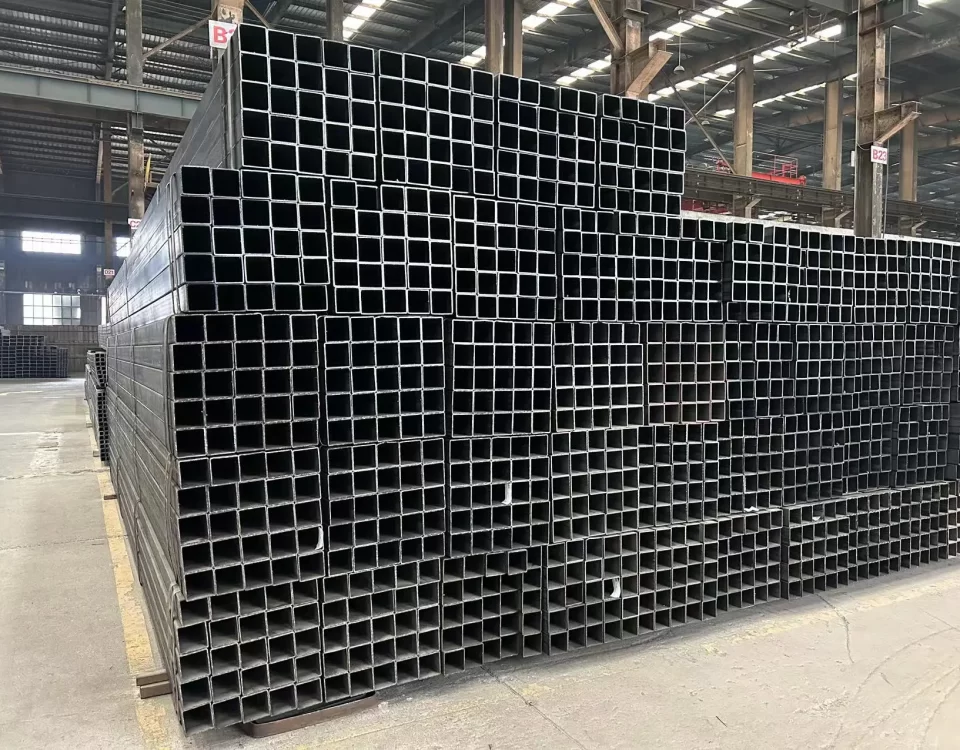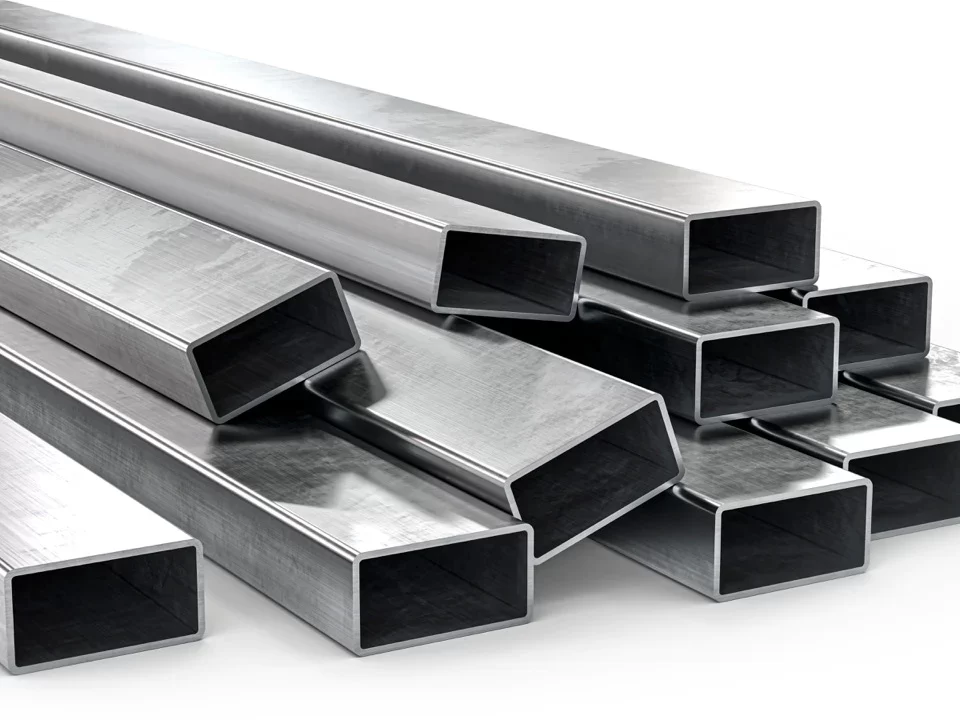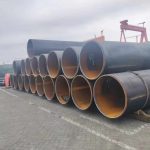
API 5L PSL2 X70 Line Pipe
October 4, 2025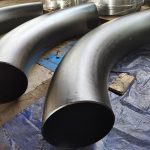
ASTM A860 WPHY 52 and WPHY 65 Carbon Steel Bend Fitting
October 12, 2025The Unyielding Core: Engineering and Integrity of ASTM A1110 Seamless Steel Structural Pipe
The construction of monumental infrastructure—from towering offshore oil platforms anchoring the maritime economy to the deep foundations supporting high-rise urban landscapes—rests upon the certainty of steel integrity. In this domain where structural failure is unimaginable, the material selection moves beyond commodity grades to specialized specifications where reliability is guaranteed from the molten pour to final installation. Central to this requirement is the ASTM A1110 Seamless Steel Structural Pipe, a specification explicitly engineered for critical load-bearing applications characterized by high stresses, dynamic loading, and demanding environmental exposure.
This is not merely tubing; it is a meticulously fabricated component designed to withstand compressive loads, bending moments, and torsional forces without compromise. Our commitment to the ASTM A1110 specification is rooted in the recognition that structural pipe demands the highest level of material uniformity and dimensional precision achievable, capabilities uniquely ensured by the seamless manufacturing process. To fully appreciate the decisive role this product plays, one must delve into the specific requirements of the A1110 standard, the inherent advantages conferred by seamless formation, and the exhaustive quality control measures that certify every meter of pipe for its role as an unyielding structural backbone.
I. Decoding the Standard: ASTM A1110 and its Structural Niche
The ASTM A1110 specification defines a high-performance category of carbon and low-alloy steel pipe intended for use as structural members. It carves out a niche above common, general-purpose pipe and even above some conventional hollow structural section ($\text{HSS}$) standards, specifically mandating performance characteristics vital for heavy construction.
The Structural Imperative
Structural pipe differs fundamentally from line pipe (e.g., API 5L) in its primary design criteria. While line pipe is governed by internal pressure ($\text{MAOP}$) and hoop stress, structural pipe is governed by external forces: axial compression, lateral wind or wave loads, bending moments, and complex load combinations. Therefore, the specification focuses intensely on yield strength ($\mathbf{Y}$), section properties (Area and Moment of Inertia), and column stability.
ASTM A1110 guarantees that the material possesses the necessary $\mathbf{SMYS}$ (Specified Minimum Yield Strength) to handle these forces. Furthermore, by being a dimensional standard, it dictates the precision required to ensure that the actual properties of the pipe—its $\mathbf{OD}$ (Outer Diameter) and $\mathbf{WT}$ (Wall Thickness)—meet the theoretical values used by structural engineers in their column buckling and moment resistance calculations. Any deviation in wall thickness or ovality directly undermines the calculated safety factor, an unacceptable risk in critical structures.
Distinction from Common HSS Standards
While $\text{ASTM A500}$ is the widely accepted standard for structural $\text{HSS}$ (square, rectangular, and round), $\text{A1110}$ often represents a higher tier, particularly when manufactured seamlessly. The seamless process eliminates the inherent uncertainties associated with the longitudinal seam found in welded $\text{HSS}$. In environments subject to dynamic loading (cyclical stresses caused by waves, wind, or machinery) or high torsional forces, the structural integrity provided by a uniform, homogeneous steel wall is preferred, if not mandatory, for fatigue resistance. The selection of $\text{A1110}$ is often the result of an engineered decision to eliminate potential weak links and maximize the design safety factor ($\mathbf{F}$).
II. The Seamless Advantage: Manufacturing Uniformity and Reliability
The $\text{SMLS}$ (Seamless) designation is the key factor elevating the $\text{A1110}$ pipe’s reliability profile. Manufactured from a solid steel billet, the seamless pipe body maintains metallurgical and mechanical homogeneity throughout its entire cross-section and length.
Production via the Piercing Mill
The manufacturing process itself is a testament to integrity. The heated billet is pierced and rolled over a mandrel, creating a tube without any fusion or welding. This process ensures:
- Uniform Strength: The final steel grain structure is oriented circumferentially around the pipe axis. This uniformity means the pipe has isotropic strength properties—it reacts equally to stresses applied from any direction (axial, circumferential, or torsional). In welded pipe, the weld $\text{HAZ}$ (Heat Affected Zone) often exhibits altered properties, but the seamless pipe is a single, contiguous mass of steel.
- Elimination of Weld Weakness: The primary point of failure in any welded pipe under cyclical or fatigue loading is the longitudinal seam. By eliminating this feature, the seamless pipe offers inherently superior resistance to crack initiation, making it mandatory for structures that must endure decades of fluctuating stress (e.g., bridge supports, offshore wind turbine foundations).
- Superior Pressure Integrity (Proof): Although $\text{A1110}$ is a structural standard, the seamless process confers high internal pressure resistance. This is invaluable when the pipe is utilized as a $\mathbf{caisson}$ or $\mathbf{piling}$ where internal hydrostatic pressure is used to aid installation or prevent collapse during deep-water placement.
Material Consumption and Cost-Efficiency
While seamless pipe generally has a higher initial cost per ton than welded pipe, its superior performance can translate into significant lifetime cost savings. The uniform structural reliability of the seamless $\text{A1110}$ often allows engineers to specify a thinner wall or a smaller $\mathbf{OD}$ than would be deemed safe with a welded alternative. This reduction in material mass lowers overall foundation costs, reduces the weight of liftable structural modules (crucial in offshore work), and minimizes the necessary field welding volume, accelerating project timelines.
III. The Metallurgy of Load Bearing: Strength, Toughness, and Weldability
The $\text{A1110}$ steel composition is tightly controlled to balance the three critical metallurgical properties required for structural dependability: high strength, assured low-temperature toughness, and excellent field weldability.
The Guarantee of Yield Strength
The primary requirement of $\text{A1110}$ is its specified minimum yield strength. This ensures that the pipe can withstand the maximum anticipated load without permanent plastic deformation. While the specification allows for various grades, the engineering objective is always to maximize the strength-to-weight ratio. The chemistry is typically a killed steel (fully deoxidized) formulation, often incorporating micro-alloying elements like Niobium ($\text{Nb}$) or Vanadium ($\text{V}$) to refine the grain structure, enhancing strength without requiring excessive carbon content.
Fracture Toughness for Cold and Dynamic Service
In structural applications, particularly those in cold climates (e.g., Arctic drilling) or subjected to impact loading, brittle fracture is a major concern. The steel must retain its ability to absorb energy even at low temperatures. This property, known as Toughness, is quantified through the **Charpy V-Notch (CVN) Impact Test**. Although $\text{A1110}$ specifies the necessary mechanical properties, designers frequently mandate supplementary requirements for $\text{CVN}$ testing at temperatures far below the minimum expected service temperature (e.g., $-20^\circ\text{C}$ or lower). The clean steel practice utilized in seamless manufacturing—with low sulfur and phosphorus—minimizes non-metallic inclusions, thereby maximizing the steel’s inherent toughness and resistance to crack initiation.
Weldability for Site Construction
The vast majority of $\text{A1110}$ pipe is welded into larger structural systems at the job site. Therefore, the steel must be highly weldable. This is primarily controlled by the **Carbon Equivalent ($\text{CE}$)**. A low $\text{CE}$ ensures that when the field weld is performed and rapidly cools, the $\text{HAZ}$ does not form brittle martensite. A brittle $\text{HAZ}$ is vulnerable to **Hydrogen-Induced Cracking ($\text{HIC}$)** and brittle fracture under residual stress.
The composition of $\text{A1110}$ seamless pipe is deliberately formulated with a low $\text{CE}$ (often below **$0.45$**), allowing for fast, reliable welding with minimal or no pre-heating, a massive logistical advantage in remote or harsh construction environments. The seamless body, being uniform, presents a consistent material to the welder, further simplifying the welding procedure specifications ($\text{WPS}$).
IV. Dimensional Precision and Tolerances: The Fit-Up Guarantee
In structural engineering, geometry is absolute. A pipe that is out-of-tolerance for diameter, wall thickness, or straightness will not fit correctly into an engineered joint or brace, leading to costly and time-consuming rework, or worse, compromising the intended load distribution. The $\text{ASTM A1110}$ standard imposes strict dimensional controls that ensure the final product meets the architect’s design intent.
Wall Thickness and Weight
Structural pipe must have a verified wall thickness ($\mathbf{WT}$) to calculate the cross-sectional area ($\mathbf{A}$), which determines the axial load capacity. The seamless pipe is inherently dimensionally stable due to its production method. The $\text{A1110}$ standard enforces tight tolerances on wall thickness deviation ($\mathbf{\pm 10\%}$ typically) and the total weight per length. This verification ensures the engineer’s assumptions regarding the pipe’s strength and buoyancy (in marine applications) are met.
Ovality and Straightness
For bracing and truss members, the pipe ends must be perfectly round (**low ovality**) to ensure a clean, gap-free fit-up to the connecting plates or other members. Excessive ovality forces complex and expensive shimming or grinding operations. Furthermore, the overall **straightness** of the pipe is crucial for stability, as any deviation can introduce unintended bending moments when the pipe is under axial compression. The maximum permissible sweep or curvature is strictly limited by $\text{A1110}$, guaranteeing smooth, accurate integration into the overall structure.
End Preparation
The seamless $\text{A1110}$ pipe is typically finished with a precise **bevel** suitable for the specific field welding procedure (e.g., $30^\circ \text{ bevel}$ with a root face). This consistency is vital for automated welding systems, which are increasingly used in modern, large-scale construction to ensure weld quality and speed.
V. Quality Assurance and Non-Destructive Examination ($\text{NDE}$) Protocols
Structural safety is a commitment validated by rigorous testing. Our commitment to $\text{ASTM A1110}$ includes a comprehensive $\text{QA/QC}$ regimen that leaves no aspect of the pipe’s integrity unchecked.
Full-Body Ultrasonic Testing ($\text{UT}$)
Unlike some $\text{HSS}$ standards where testing may be limited to spot checks, seamless $\text{A1110}$ pipe undergoes extensive **Non-Destructive Examination ($\text{NDE}$)**. **Full-body Ultrasonic Testing ($\text{UT}$)** is performed to scan the entire volume of the pipe wall. This sophisticated testing detects internal flaws such as:
- Laminations: Thin, flat inclusions parallel to the pipe surface, often caused by impurities in the steel billet.
- Inclusions: Small pockets of non-metallic material.
- Cracks: Any surface or subsurface discontinuities that could act as stress risers.
The seamless nature of the pipe greatly simplifies this process, as there is no $\text{HAZ}$ to complicate the ultrasonic signal interpretation, allowing for a clearer, more definitive flaw detection across the entire structural member.
Mechanical and Metallurgical Verification
A battery of destructive tests is performed on coupons taken from each heat and/or lot of pipe to confirm the material’s properties:
- Tensile Testing: Directly measures the $\mathbf{SMYS}$ (Yield Strength) and $\mathbf{SMTS}$ (Tensile Strength), along with **Elongation** (a measure of ductility). The high elongation values guaranteed by $\text{A1110}$ are essential for structures in seismic zones, allowing the structure to deform plastically without sudden catastrophic failure.
- Hardness Testing: Measures the pipe’s resistance to localized penetration, ensuring that the steel’s hardness remains within a range that confirms the success of the heat treatment and ensures good weldability and low $\text{SSC}$ (Sulfide Stress Cracking) susceptibility in corrosive environments.
- Chemical Analysis: Confirms the precise balance of alloying elements (particularly $\text{C}, \text{Mn}, \text{S}, \text{P}$) used to calculate the $\text{CE}$ and verify the steel’s compliance with the specific $\text{A1110}$ grade composition.
Hydrostatic Testing (As Supplementary Requirement)
While not always mandatory for $\text{A1110}$ *structural* applications, a hydrostatic test can be performed as a supplementary requirement. The pipe is internally pressurized with water to a level that applies stress far beyond the normal operating load. This test serves as a final, definitive proof of the structural integrity and pressure containment capacity, which is crucial when $\text{A1110}$ pipe is used in applications like sealed foundation piles or fluid-filled columns.
VI. Critical Applications of A1110 Seamless Structural Pipe
The engineering certainty provided by $\text{ASTM A1110}$ seamless pipe makes it the mandated choice for projects where failure is intolerable and load conditions are extreme.
Offshore and Marine Construction
- Jacket Legs and Bracing: In offshore platforms, pipe legs and cross-bracing are subjected to relentless, cyclical wave loading and corrosive environments. The seamless structure provides maximum fatigue resistance, and the guaranteed $\text{CVN}$ toughness ensures performance in frigid deep-water conditions.
- Foundation Piling (Caissons): Large-diameter seamless $\text{A1110}$ is used for deep foundation caissons. The pipe must withstand massive axial weight from the platform while being driven into the seabed, requiring high compressive strength and precise dimensional stability.
Civil Infrastructure and High-Rise Buildings
- Deep Foundations and Micropiles: In densely populated urban areas, high-rise construction often relies on deep piles to transfer loads to bedrock. Seamless structural pipe provides reliable, consistent column strength and is resistant to damage during driving.
- Bridge Structures: Used for critical members in large bridge trusses and arches where the pipe is exposed to constant vibration, vehicular loads, and thermal expansion/contraction.
Heavy Machinery and Industrial Frames
- Crane Booms and Lifting Equipment: Equipment subject to highly dynamic and eccentric loading, such as large crane booms, require materials with excellent $\text{Y/T}$ ratios (low ratio) and confirmed ductility. The seamless $\text{A1110}$ structure ensures uniform stress distribution and superior resistance to localized buckling under extreme bending moments.
The recurring theme across all these applications is the need for a structure that is predictable, durable, and free from the structural ambiguity that can be introduced by a welded seam.
VII. Future Directions and Lifetime Value
The future of $\text{A1110}$ structural pipe is tied to the industry’s need for lighter, stronger, and more corrosion-resistant structures.
Higher Strength Grades
As steelmaking technology advances (particularly $\text{TMCP}$—Thermo-Mechanical Control Process), newer, higher-strength grades within the $\text{A1110}$ specification will become more common. These grades allow for further wall thickness reduction, improving the strength-to-weight ratio while maintaining the necessary ductility and weldability—a critical trend for reducing the cost and complexity of constructing massive components like offshore wind turbines.
Corrosion Protection and Longevity
Structural integrity over a long service life requires robust corrosion management. $\text{A1110}$ seamless pipe is highly compatible with all major industrial coatings and galvanization processes. Our company provides comprehensive surface preparation and coating services (including FBE, 3LPE, and specialized marine coatings) that integrate directly with the pipe manufacturing process. This dual certification—structural integrity (A1110) combined with certified protective coatings—guarantees the pipe’s performance for its designed service life, minimizing the need for costly inspection and maintenance cycles. The superior surface quality of seamless pipe also provides a better substrate for coating adhesion than some welded products.
VIII. Comprehensive Technical Specification Tables
The following tables summarize the critical dimensions, material properties, standards, and parameters that define the quality and capability of our ASTM A1110 Seamless Steel Structural Pipe.
A. Core Standard and Metallurgical Parameters
| Parameter | Specification | Primary Focus | Compliance |
|---|---|---|---|
| Standard | ASTM A1110 | Structural integrity, mechanical performance | Mandatory |
| Type | Seamless (SMLS) | Uniformity, absence of weld-related flaws | Mandatory |
| Primary Test | Tensile Testing | Verifies $\text{SMYS}$ and ductility (Elongation) | Mandatory |
| Weldability Control | Carbon Equivalent ($\text{CE}$) | Guaranteed low CE for field weldability | Internal SOP $\text{< 0.45}$ |
| Toughness | Charpy V-Notch (CVN) | Resistance to brittle fracture at low temperatures | Supplementary ($\text{SR}$) |
| Surface Finish | Black, Bare, or Coated | Protection from atmospheric corrosion | Custom |
B. Dimensional and Manufacturing Range
Our manufacturing capability ensures the provision of precise dimensions crucial for complex structural fit-up.
| Dimensional Feature | Range | Common Tolerances (ASTM A1110) | Application Notes |
|---|---|---|---|
| Nominal Pipe Size (NPS) O.D. | $\text{1/2″}$ through $\text{26″}$ | $\text{\pm 1\%}$ of $\text{OD}$ (or tighter) | Full range for braces, columns, and piles. |
| Wall Thickness (WT) Range | $\text{Schedule 40}$ through $\text{XXS}$ | $\mathbf{\pm 10\%}$ of Nominal $\text{WT}$ | Optimized for strength-to-weight ratio. |
| Length | Single Random (SRL) / Double Random (DRL) | $\text{\pm 4″}$ to $\text{\pm 8″}$ | Designed for efficient construction and minimal waste. |
| Straightness (Sweep) | Max $\text{1/8″}$ in $4 \text{ ft}$ (or stricter) | Critical for column stability and alignment. | |
| End Finish | Square Cut or Beveled | Precision bevel for accurate fit-up and welding. | Automated field welding compatibility. |
C. Typical Mechanical Properties (Illustrative Grade)
The mechanical data is certified by mill test reports, directly verifying the pipe’s structural capacity.
| Property | Value (Typical Grade) | Requirement Basis |
|---|---|---|
| Specified Minimum Yield Strength ($\mathbf{SMYS}$) | $50,000 \text{ psi}$ ($\approx 345 \text{ MPa}$) | Structural design factor calculations. |
| Specified Minimum Tensile Strength ($\mathbf{SMTS}$) | $70,000 \text{ psi}$ ($\approx 485 \text{ MPa}$) | Ultimate load resistance limit. |
| Minimum Elongation | $\mathbf{20\%}$ | Ductility for seismic/dynamic loading (plasticity). |
| Hardness (Max) | $240 \text{ HB}$ or lower | Controlled to ensure weldability and $\text{SSC}$ resistance. |
IX. Conclusion: The Foundation of Trust
The ASTM A1110 Seamless Steel Structural Pipe is more than just a component; it is a foundational pillar of trust in engineered construction. By eliminating the metallurgical inconsistencies of a longitudinal seam and imposing rigorous dimensional and mechanical controls far surpassing basic requirements, this pipe provides structural engineers with the certainty required to push the boundaries of modern infrastructure.
From the deep seabed to the urban skyline, the integrity of a seamless $\text{A1110}$ pipe ensures that the structures relying upon it remain unyielding, predictable, and durable for their full, intended service life.

